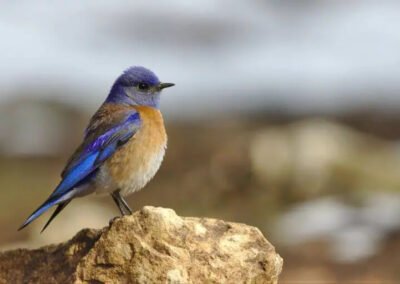Chasing Spring: The Marvel of Hummingbird Migration

As the spring unfolds, many hummingbirds, having wintered in the warmer climates of Central America or Mexico, embark on their northward migration to their breeding grounds in the southern United States. Beginning as early as February, their journey extends gradually, reaching areas further north as spring progresses.
These agile travelers strategically navigate their journey, making use of optimal daylight hours to find nectar sources like blooming flowers. Flying at lower altitudes allows them to spot and access food easily, with occasional stops along the way. Guided by tailwinds, hummingbirds conserve energy while maintaining impressive speeds, reaching up to 500 miles in a stretch.
Prior to migration, hummingbirds bulk up, gaining 25-40% of their body weight to sustain their energy levels during the trek over land and water. While male hummingbirds often signal the arrival of spring, not all birds migrate; some remain in regions like California or along the southern coasts.
To support these marvelous creatures and witness the marvel of hummingbird migration firsthand, we offer some best practices:
- If you notice a decline in hummingbird populations, consider exploring data at eBird for your county over the past few years to assess changes.
- It’s essential to maintain feeding routines, providing an ideal sugar-water mixture and regularly cleaning feeders to prevent mold and fermentation.
- Avoid using honey or red food coloring and ensure cleanliness to safeguard the health of these marvelous creatures.
- Keeping your feeders up during the fall will not cause hummers to delay migration. In fact, feeders *may* aid hummingbirds in surviving during early spring or late fall when flowers are scarce.
To witness the marvel of hummingbird migration firsthand, explore Hummingbird Central’s Spring 2024 Hummingbird Migration Map. Additionally, visit our Find-a-Retailer page to discover stores stocked with WBFI products, including hummingbird nectar and feeders, to attract these beautiful birds to your yard this spring.
Recent Articles

Chasing Spring: The Marvel of Hummingbird Migration

2024 Great Backyard Bird Count Results

The Art of Attracting Birds to Your Yard

Why Bird Feeding is Important

Hot Tips for Cool Birds: Caring for Feathered Friends During the Summer Heat

The Soothing Melody of Birds: Exploring the Mental Health Benefits of Nature’s Song

How To Stop Birds From Building Nests On Your House

Celebrating National Bird Feeding Month: Then & Now

Importance of Helping our Flying Friends in Winter

AOS Announces Transformative Changes to English Bird Names

Join the Audubon Christmas Bird Count!

